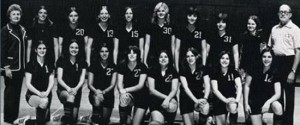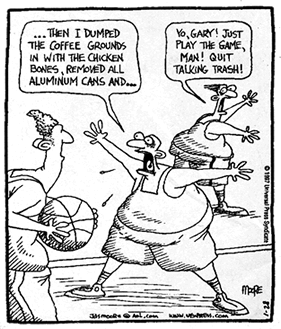Why not a 10-second rule for women’s college basketball?
Every year the NCAA Basketball Rules Committee takes a look at what can be done to improve the college game and how it is played. The committee recently released its findings, and strong proposals were made for immediate implementation of a rule to address excessive elbow swinging. That one will probably make it into the rule books for 2010-11, as it is a safety-related issue, even though the two-year rules period has not expired. (The NCAA implements rules changes every two years.)
Some other rules — extending out the 3-point line by an additional 12 inches for the women and addressing the charge zone under the basket for the men — will see some testing during exhibition games this upcoming season, with the thought of implementation for the 2011-12 season. Another rule that received some significant discussion, but which did not make it into the experimental stage, was the 10-second backcourt rule for the women’s game.
For those of you who aren’t completely versed in the women’s college game, it is the only division of basketball that does not have a backcourt rule. Every other division, from local youth leagues (which usually use modified high school rules) to the pros, have a 10- or 8-second backcourt rule. I don’t know how many women’s college games I’ve been at where I’ve heard someone behind me question why an official isn’t blowing his or her whistle when it is taking an extraordinarily long amount of time for a team to get the ball up the floor. I’ll usually turn around and explain about the lack of a 10-second rule in the college women’s game, where that explanation is most-often received by a completely dumb-founded look.
“Seriously?”
“Yes, seriously.”
Way back in 1970 (when a gallon of gas was 36 cents and an issue of Sports Illustrated sold for 15 cents), the 30-second shot clock was adopted for women’s college basketball. Perhaps the thinking at the time was why would any team waste time getting the ball over halfcourt with just 30 seconds to make a shot? Certainly we don’t need a 10-second backcourt rule, too…
 Well, in 1970, college women were still using tennis shoes to play the game, uniforms had sleeves and the two-handed free throw was still a recognized shooting style. The 30-second shot clock was put in place at the time because many women’s college teams would stall at the end of games to run out the clock for a win, making the game less exciting to watch than a load of laundry in the dryer. In today’s game, we have college players who have mad dribbling skills to match the men’s game and a few who can dunk the ball. The NCAA men have a 35-second clock with a 10-second backcourt rule. So why are the women stuck back in the 1970s with an outdated handicap standard of a 30-second shot clock and no backcourt rule?
Well, in 1970, college women were still using tennis shoes to play the game, uniforms had sleeves and the two-handed free throw was still a recognized shooting style. The 30-second shot clock was put in place at the time because many women’s college teams would stall at the end of games to run out the clock for a win, making the game less exciting to watch than a load of laundry in the dryer. In today’s game, we have college players who have mad dribbling skills to match the men’s game and a few who can dunk the ball. The NCAA men have a 35-second clock with a 10-second backcourt rule. So why are the women stuck back in the 1970s with an outdated handicap standard of a 30-second shot clock and no backcourt rule?
Well apparently, the issue is one of considerable debate among coaches at the college level. In the NCAA committee’s report, it was stated, “A survey of coaches showed a split on whether this change should be made in the future.”
What could possibly be the reasons for opposing the change?
Proponents of the rule say that it would speed up the game and provide some additional excitement to a game that is still trying to gain some respect from the larger basketball fan base. I can only assume that opponents to the rule are coaches who run a slow, half-court offense, where the player bringing the ball up the court actually dribbles over to the bench nearly every possession to get instruction from her coach on what to run. (Yes, I actually witnessed that strategy for a season.) Or perhaps it is opposed by those coaches who don’t have a stable of quality ball handlers and who worry they would be looking at games with 40+ turnovers. (Just think of the young players now who could be convinced to aggressively improve their ball handling if they knew schools were looking for a greater number of highly-skilled dribblers.)
Implementation of the 10-second rule would also create some pretty exciting game finishes. No longer would a team be able to use their full 30 seconds of the game in the backcourt to milk the clock on a final possession. A flurry of possessions in the last 30 seconds of a game could create some pretty exciting finishes.
But what are the chances of getting the rule implemented? As evidenced by some serious discussion about this very same issue in 2006, the NCAA can be a slow-moving machine. After years of surveys and discussion up through that time, the committee is still debating the issue four years later.
What are your thoughts on implementing the rule?



You must be logged in to post a comment.